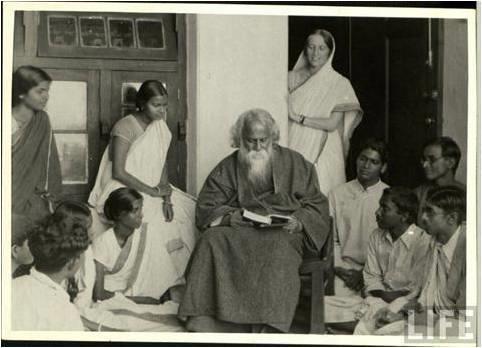Contents
· Introduction
· Kirtan
· Vishnupur School or Gharana Style
· Tappa
· Tumri
· Folk Songs and Rabindranath Tagore
Introduction
West Bengal, India’s fourth most populous state is rich in art and culture with many doyens and luminaries making a mark on the world stage. A description on West Bengal is incomplete without a discourse on its musical heritage. Music runs through the veins of the Bengalis and some of its popular types are mentioned as below.
Kirtan
The Kirtan is the earliest form of music consisting of a melodious blend of musical and lyrical connections with the Almighty. Slow Dhrupadic measure in couplets is threaded by the leader of the group and recitation of the same is defined musically by the rest of the members. The trend follows until the whole song based mostly on mythical episodes is completed with the same zest and enthusiasm. The instruments accompanying the Kirtan are Tampura, khol, box harmonium and violin.
Traditional Kirtans are sung exclusively in classical saga and four sub styles of such sagas have developed over time. These are Manoharshahi, Garanhati, Mandarini and Reneti schools.
Vishnupur School or Gharana Style
After the Mogul authority declined in the country, its rulers and courtroom administrators started leaving Delhi. Amongst them were the descendants of Mian Tansen – the exponent of Drupad Style classical music. Amid this development, a few of them took abode in the East Indian state of Bengal, and one of the settlers was a 'dhrupadiya' named Bahadur Khan. The talent of Khan helped him to get access to the feudatory chief of Vishnupur.
The popularity of Khan was much owing to fame he had established in the Vishnupur School or Gharana. The alma maters of this Gharana rose to fame and set fresh milestones in the history of Drupad Style classical music. Few notable alma maters of the Vishnupur School include Saurindramohan Tagore and his brother Jatindhramohan Tagore of the royal Tagore family. The classical raga setup by the Tagore brothers thus helped Calcutta to become the centre of Hindustani classical music in Bengal during the nineteenth century.
Tappa
During the early nineteen century, Ramnidhi Gupta or Nidhu Babu took the initiative to add new fringes to the classical genre. He composed notable Bengali songs based on secular love and earned due recognition amongst landlords and royals within a very short span. Eventually the Tappa style became popular amongst the musicians and they enriched and promoted the Tappa style for devotional and Jatra songs.
Tumri
Tumri is quite light and liberal kind of classical music which is equally popular, but took some time to earn its due fame unlike the Tappa and Gharana styles which rose to fame instantaneously.
Folk Songs and Rabindranath Tagore
Baul, Tappa, Bhatiali, and Sari are the prominent varieties of folk songs composed by Rabindranath Tagore. The legendary Noble prize winner has penned over 2,500 songs exploiting all major adaptations of the folk. Tagore, at the same time, didn’t limit his work to Hindustani classical and indigenous limits. He explored European notes and also added western flavor to his compositions.
Tagore had this matchless ability to compose songs and poems across different categories. From devotion and love to nature to patriotism, his songs cover various subjects and moods of the commoner. The structure of his songs is mostly Dhrupadic (four stanzas). Tagore’s compositions like 'Amar Sonar Bangla' in Baul style and 'Janaganamana-adhinayaka' in Dhrupad style are some of the examples of his unmatched contribution to the musical landscape of West Bengal.

